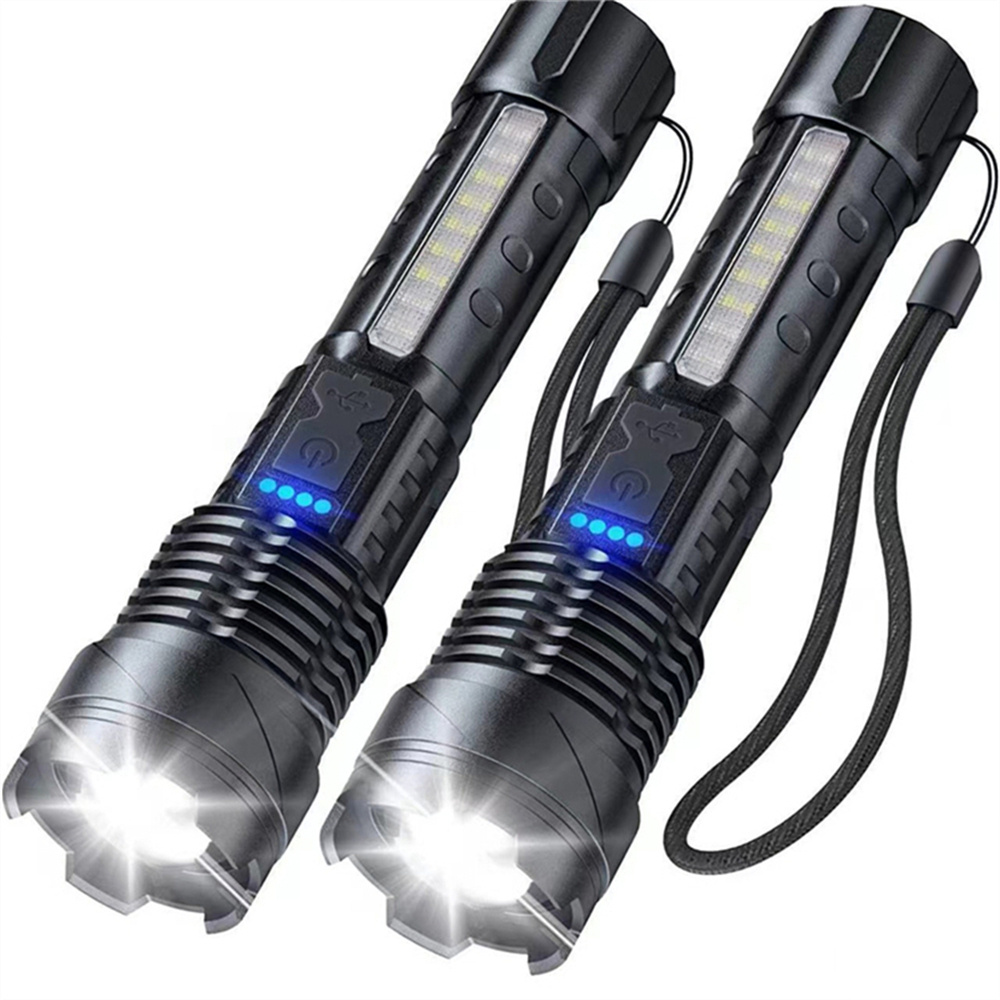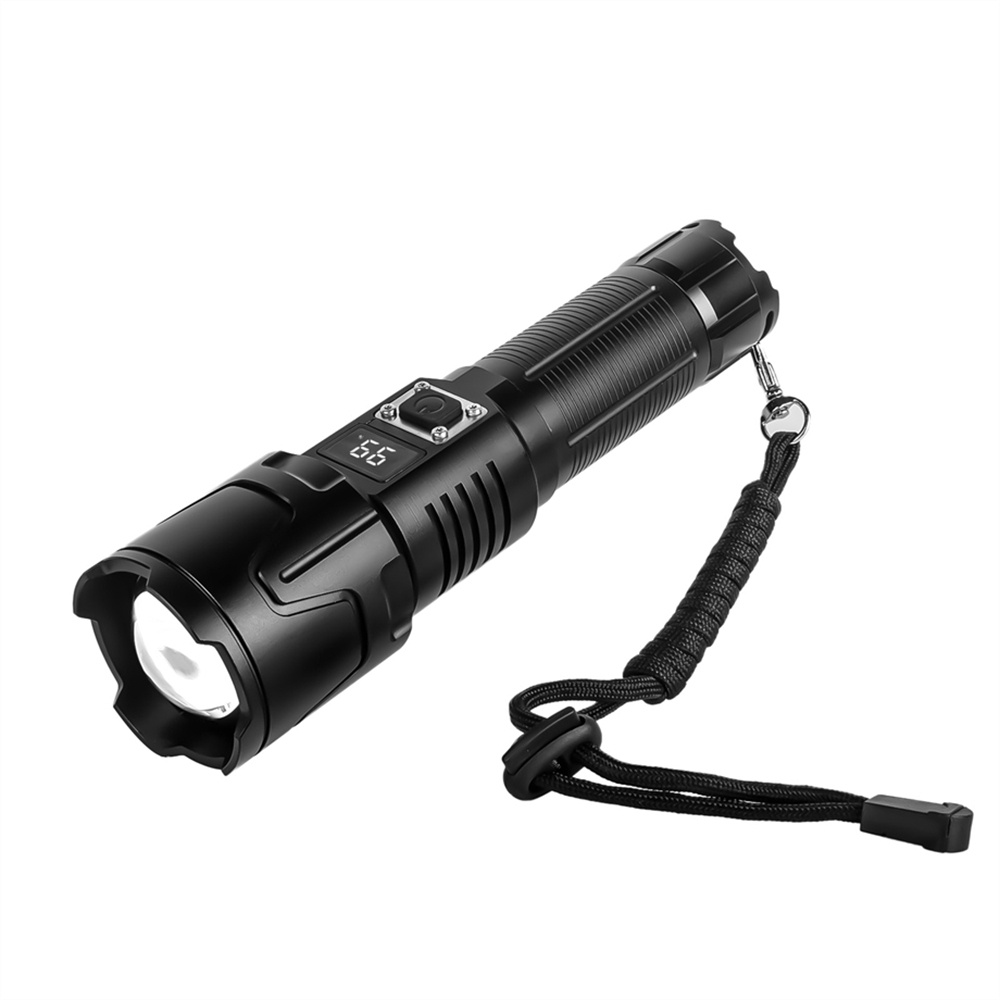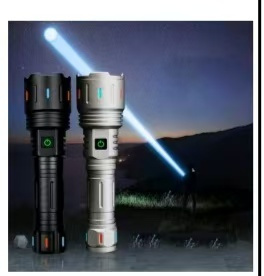Top Tips for Scaling Your Flashlight Procurement Strategy

Scaling your flashlight procurement strategy is essential for driving business growth, and here are some Top Tips for Scaling Your Flashlight Procurement Strategy. Companies that optimize their procurement processes often achieve higher efficiency and cost savings. A study by Hackett Group shows that businesses adopting Spend Analytics and eSourcing software improve operational intelligence while managing fewer resources. This digital transformation is no longer optional—it is a strategic priority for growth.
However, challenges like manual processes, poor communication, and supplier issues can hinder progress. High turnaround times and outdated systems lead to missed opportunities. To overcome these obstacles, you must track and analyze spend data effectively and adopt a proactive spend management strategy.
Aligning procurement strategies with business objectives ensures every decision supports your company’s long-term vision. This alignment enhances collaboration, optimizes processes, and contributes to sustainable growth. By refining your approach, you can unlock new opportunities and position your business for success, following these Top Tips for Scaling Your Flashlight Procurement Strategy.
Key Takeaways
Keep all buying data in one place for better tracking. This makes it easier to follow rules and see what’s bought.
Use online tools and machines to make buying faster. These tools cut mistakes and help orders get done quickly.
Build good supplier connections by talking clearly and checking work often. Good teamwork means better products and lower costs.
Plan smart buying and guess future needs to save money. This helps match what you buy with what’s needed and avoids waste.
Focus on being eco-friendly and checking product quality. Working with green suppliers improves your image and keeps customers happy.
Centralizing Procurement Data and Processes
Centralizing procurement data and processes is a vital step in creating a more efficient and scalable procurement system. By consolidating information and streamlining workflows, you can improve decision-making, reduce costs, and align your procurement activities with your business goals.
Benefits of Centralization
Enhanced visibility and decision-making.
Centralizing procurement data gives you a clear view of your purchasing activities. This visibility allows you to track all purchases, ensuring compliance with company policies and regulations. It also simplifies auditing processes, reducing the risk of fines or reputational damage. With centralized data, you can make informed decisions that align with your spend management strategy and budget goals.
Streamlined procurement operations.
A centralized approach eliminates inefficiencies caused by fragmented systems. It consolidates purchasing power, enabling better negotiation deals with suppliers. Administrative costs decrease as processes become more streamlined. Additionally, automation of manual tasks reduces errors and accelerates approvals, ensuring faster procurement cycles and improved operational efficiency.
Steps to Centralize Procurement
Conducting a comprehensive procurement audit.
Start by evaluating your current procurement processes. Identify inefficiencies, redundancies, and areas where compliance may be lacking. A thorough audit helps you understand your organization's spending patterns and highlights opportunities for improvement. This step lays the foundation for a comprehensive strategy to centralize your procurement operations.
Implementing centralized procurement platforms.
Adopting a centralized platform is key to achieving efficiency. These platforms ensure consistent application of procurement policies across your organization. They also provide shared visibility, enhancing coordination among teams. Features like automated workflows, real-time tracking, and faster approvals eliminate bottlenecks and improve supplier relationships. Centralized platforms also reduce fraud risks and enhance audit readiness, making them an essential tool for modern procurement.
By centralizing your procurement data and processes, you can unlock significant cost savings, improve compliance, and create a more agile procurement system. This approach not only supports your current needs but also positions your business for long-term growth.
Leveraging Digital Tools and Automation

Digital tools and automation can transform your procurement process, making it faster, more accurate, and cost-effective. By adopting the right technologies, you can streamline operations, reduce errors, and improve your spend management strategy.
Digital Tools for Procurement Efficiency
Procurement management software for streamlined operations.
Procurement management software simplifies your operations by centralizing supplier information and automating repetitive tasks. These tools provide real-time data, enabling you to make data-driven decision making a core part of your strategy. With better visibility into spending, you can identify inefficiencies and reduce costs. Additionally, these platforms enhance supplier collaboration and improve contract management, ensuring compliance and mitigating risks.
Tip: Look for software that offers features like spend tracking, supplier performance monitoring, and automated workflows to maximize efficiency.
Inventory tracking systems for better spend management.
Inventory tracking systems help you monitor stock levels and avoid over-purchasing or understocking. These systems provide insights into procurement patterns, allowing you to optimize resource allocation. By integrating inventory tracking with procurement software, you can align purchasing decisions with actual needs, reducing waste and saving costs. Improved transparency also helps you manage supplier relationships more effectively.
Note: Transitioning to digital systems not only improves organization but also enhances collaboration across teams.
Automating Procurement Workflows
Reducing manual errors with automation.
Automation eliminates manual data entry, reducing the risk of errors in procurement processes. Automated systems verify purchase details upfront, ensuring accuracy in financial records. This accuracy minimizes discrepancies and enhances transparency in reporting. By automating repetitive tasks, you can free up your team to focus on strategic activities that drive growth.
Accelerating purchase orders and approvals.
Automating purchase orders speeds up the approval process, allowing you to complete transactions faster. This efficiency reduces invoice processing times and improves cash flow management. Automated systems also prevent unauthorized spending by ensuring only approved personnel can authorize purchases. With better control over procurement workflows, you can identify cost-saving opportunities and optimize spending.
Callout: Faster approvals mean your business can respond quickly to market demands, giving you a competitive edge.
Leveraging digital tools and automation not only enhances efficiency but also positions your procurement operations for long-term success. By integrating these technologies, you can reduce costs, improve accuracy, and make smarter decisions.
Optimizing Supplier Relationships and Lists
Building strong supplier relationships and refining your supplier list are essential components of an effective procurement strategy. These steps ensure reliability, cost efficiency, and long-term success in your supply chain.
Strengthening Supplier Partnerships
Establishing clear communication channels.
Clear communication forms the foundation of strong supplier partnerships. Open and consistent dialogue helps you align expectations, resolve issues quickly, and foster trust. Regular updates on order statuses, delivery timelines, and potential challenges keep both parties informed. This transparency minimizes misunderstandings and strengthens collaboration.
Strong supplier partnerships offer several benefits:
Improved product quality through better collaboration.
Cost savings achieved via streamlined processes and better pricing.
Enhanced reliability, reducing delays and disruptions.
Opportunities for innovation as suppliers share valuable insights.
Risk mitigation by identifying and addressing potential issues early.
Negotiating contracts for procurement cost savings.
Effective supplier negotiation is key to reducing procurement costs. Start by reviewing existing contracts to identify hidden fees or renegotiation opportunities. Leverage your purchasing data to make informed decisions and secure better terms. Consolidating suppliers can also enhance your negotiating power, enabling you to achieve volume discounts. Additionally, automating procurement tasks through eProcurement systems improves efficiency and reduces costs.
Tip: Adjust product specifications when possible to meet your needs without compromising quality. This flexibility can lead to significant savings.
Refining Supplier Lists
Evaluating supplier performance metrics.
Regularly assessing supplier performance ensures your procurement process remains efficient and reliable. Key metrics to track include:
Metric | Description |
|---|---|
Cost | Ensures competitive pricing and value for money. |
Quality | Measures consistency in meeting product standards. |
On-Time Delivery Rate | Tracks the percentage of orders delivered on or before the scheduled date. |
Lead Time | Evaluates the time taken from order placement to delivery. |
Supplier Risk Score | Identifies potential risks associated with a supplier. |
Contribution to Innovation | Assesses the supplier’s role in introducing new products or processes. |
Sustainability Practices | Examines the supplier’s commitment to environmental and social responsibility. |
Tracking these metrics helps you identify underperforming suppliers and address issues proactively.
Onboarding reliable suppliers and removing underperformers.
Refining your supplier list involves onboarding reliable partners while phasing out those who fail to meet expectations. Reliable suppliers ensure consistent quality, timely deliveries, and adherence to ethical practices. Removing underperformers mitigates risks such as supply chain disruptions, ethical concerns, or financial instability. Diversifying your supplier base further reduces dependency on a single source, enhancing resilience.
Note: Building strong relationships with your suppliers improves communication and ensures long-term reliability.
Optimizing supplier relationships and lists strengthens your procurement process, reduces costs, and enhances your spend management strategy. By focusing on performance and collaboration, you can create a robust and sustainable supply chain.
Implementing Cost-Saving Measures
Cost-saving measures are essential for optimizing your procurement process. By adopting strategic sourcing and demand forecasting, you can uncover cost-saving opportunities while maintaining quality and efficiency.
Strategic Sourcing for Procurement Cost Savings
Identifying cost-effective suppliers without compromising quality.
Strategic sourcing helps you identify suppliers that balance cost and quality. Focus on contract management to reduce expenses while ensuring high standards. Track supplier performance using key metrics like delivery times and product quality. Use total cost of ownership (TCO) analysis to evaluate all procurement-related expenses, including hidden costs. Cost modeling and scenario planning can also help you explore savings opportunities without sacrificing quality.
Benefits of strategic sourcing include:
Lower costs through economies of scale.
Access to global expertise and market knowledge.
Freeing up internal resources by outsourcing low-value, high-volume purchases.
Leveraging bulk purchasing for discounts.
Bulk purchasing is a proven way to achieve cost savings. By consolidating orders, you can negotiate better terms with suppliers. This approach improves inventory management and enhances your negotiation leverage. Suppliers often offer discounts for larger orders, helping you reduce procurement costs while ensuring a steady supply of materials.
Tip: Use historical purchasing data to identify opportunities for bulk orders and prevent unnecessary spending.
Demand Forecasting for Spend Management
Using data to predict procurement needs.
Demand forecasting uses historical data and real-time signals to predict future needs. Accurate forecasts help you optimize production schedules and inventory levels. This reduces costs by preventing overstocking or understocking. AI and machine learning tools can enhance forecasting accuracy, enabling better decision-making and improved customer satisfaction.
Key benefits of demand forecasting:
Reduced costs through better inventory management.
Enhanced decision-making with data-driven insights.
Increased profitability by aligning supply with demand.
Aligning procurement with market trends.
Aligning your procurement strategy with market trends ensures you stay competitive. Start by analyzing historical spend and market conditions. Use technology like spend analysis solutions to identify inefficiencies and opportunities. Implement demand forecasting to optimize inventory and make informed decisions. E-procurement platforms can further modernize your processes and automate routine tasks.
Callout: Staying ahead of market trends helps you adapt quickly and maintain a robust spend management strategy.
By implementing these cost-saving measures, you can optimize your procurement process, reduce expenses, and achieve long-term savings. Strategic sourcing and demand forecasting are powerful tools for improving efficiency and aligning procurement with your business goals.
Ensuring Sustainability and Quality Control

Sustainability and quality control are critical for a robust procurement strategy. By focusing on eco-conscious practices and maintaining high standards, you can enhance your spend management strategy while meeting evolving consumer expectations.
Sustainable Procurement Practices
Partnering with eco-conscious suppliers.
Collaborating with eco-conscious suppliers helps you reduce environmental impact and align with sustainability goals. Look for suppliers with certifications that verify their commitment to ethical and sustainable practices. This approach minimizes risks like greenwashing and ensures compliance with environmental guidelines. For example, Unilever saved $1.27 billion over two decades by prioritizing sustainable sourcing. Partnering with such suppliers also boosts your corporate social responsibility (CSR) profile, creating goodwill and differentiation in the market.
Benefits of sustainable procurement include:
Reducing waste and improving resource efficiency.
Lowering carbon emissions and energy consumption.
Enhancing brand image and avoiding ethical risks.
Meeting consumer demand for environmentally friendly products.
Sourcing sustainable flashlight materials.
Sourcing sustainable materials for flashlights can be challenging but rewarding. Focus on suppliers offering recyclable or biodegradable components. This reduces the negative impact of non-certified sources. While sustainable sourcing may seem costlier initially, it often leads to long-term savings through improved efficiency and reduced waste. Overcoming challenges like identifying genuine suppliers and navigating certification gaps requires thorough research and due diligence.
Maintaining Quality Standards
Conducting regular product quality checks.
Regular quality checks ensure your flashlights meet customer expectations. Use tools like quality management software (QMS) to centralize inspections and track performance. Advanced technologies like IoT and AI can monitor production processes in real time, reducing errors. For instance, a manufacturing plant reduced customer complaints significantly by implementing strict handling procedures. Regular audits also help identify defects early, saving costs and maintaining reliability.
Setting clear quality benchmarks with suppliers.
Establishing clear benchmarks ensures consistency in product standards. Share detailed specifications with suppliers and monitor their adherence to these requirements. Foster a quality-focused culture by training procurement teams and suppliers on inspection techniques. Key performance indicators (KPIs) like defect rates and on-time delivery help measure effectiveness. Strong benchmarks build trust and ensure your procurement strategy delivers high-quality results.
By prioritizing sustainability and quality control, you can create a procurement process that balances cost, efficiency, and environmental responsibility. This approach strengthens your supply chain and positions your business for long-term success.
Scaling your flashlight procurement strategy ensures efficiency, cost savings, and supplier reliability. Centralizing data improves visibility and decision-making. Digital tools and automation streamline workflows, while supplier optimization enhances collaboration and reduces risks. Cost-saving measures like strategic sourcing and demand forecasting protect profit margins. Sustainability and quality control strengthen your supply chain and align with consumer expectations.
Successful businesses prioritize speed-to-market, set measurable KPIs, and refine strategies based on market needs. A proactive spend management strategy transforms procurement into a strategic asset, fostering growth and operational efficiency. Start aligning your strategy with business goals to unlock long-term success.
FAQ
What is the first step to scaling your flashlight procurement strategy?
Start by conducting a procurement audit. This helps you identify inefficiencies, redundancies, and areas for improvement. Use the insights to centralize data, streamline processes, and align procurement activities with your business goals. A strong foundation ensures scalability and efficiency.
How can digital tools improve procurement efficiency?
Digital tools like procurement management software centralize supplier data and automate repetitive tasks. These tools provide real-time insights, reduce errors, and enhance collaboration. By integrating inventory tracking systems, you can optimize stock levels and align purchasing decisions with actual needs, saving time and money.
Why is supplier performance evaluation important?
Evaluating supplier performance ensures reliability and quality. Track metrics like cost, delivery times, and product quality. This helps you identify underperforming suppliers and onboard reliable ones. Regular assessments strengthen your supply chain and reduce risks, ensuring consistent procurement success.
How does demand forecasting help in procurement?
Demand forecasting uses historical data to predict future needs. Accurate forecasts prevent overstocking or understocking, reducing waste and costs. By aligning procurement with market trends, you can make informed decisions, optimize inventory, and improve customer satisfaction.
What are the benefits of sustainable procurement practices?
Sustainable procurement reduces environmental impact and enhances your brand image. Partnering with eco-conscious suppliers and sourcing sustainable materials minimizes waste and ensures compliance with ethical standards. This approach meets consumer expectations and positions your business as socially responsible.
Tip: Look for suppliers with certifications to verify their commitment to sustainability.
See Also
Essential Guidelines for Selecting Your Flashlight Supplier
Key Strategies for Finding Dependable Flashlight Suppliers
Best Practices for Acquiring Wholesale Flashlights Effectively
About US
Follow Us
Hello,Friend,
I am Mary from Helius, we are manufacturer of LED lighting products with more than a decade of experiences.
We offer hot selling products in market and guarantee the quality with competitive cost.
Let’s have more discussion on your inquiry.
Or you can reach out me via what’s up/tele gram +8618123952945 if it’s favorable to you.
Address
4th Floor, Building A16, Intelligent terminal industrial park of Silicon Valley, Dafu Industrial Zone,Guanlan, Shenzhen, 518110 China
Contacts
mary@heliuslights.com
heliuslight04@hotmail.com
+0086 18123952945
